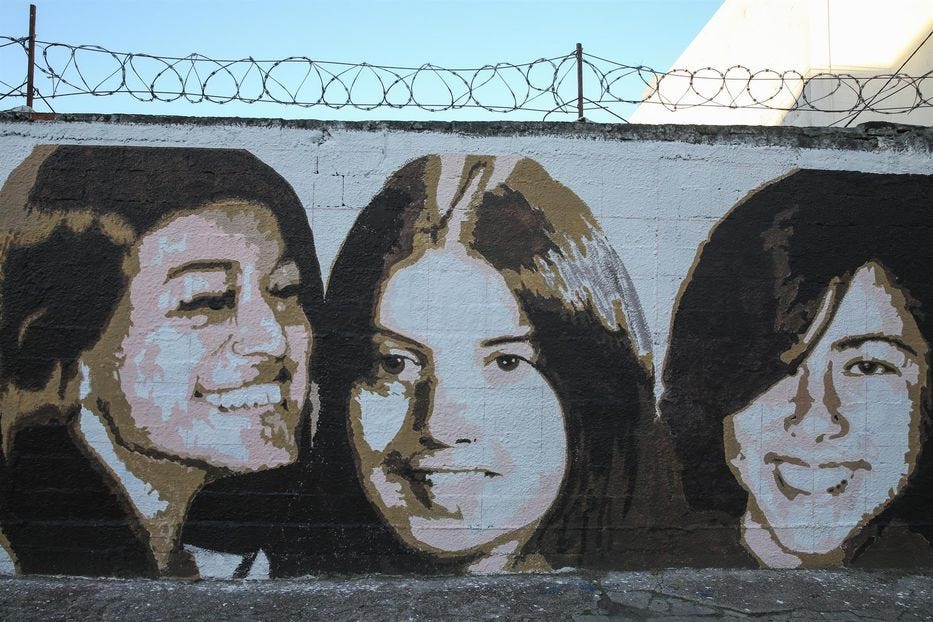Regional Human Rights Bodies and Compliance- A Decision in the Muchachas de Abril Case
Understanding the latest dictatorship ruling in Uruguay
Early on the morning of April 21, 1974, the Uruguayan Armed Forces and police shot several rounds of ammunition into the house where Diana Maidanik (21 years old), Silvia Reyes (21 years old and 6 months pregnant), and Laura Raggio (19 years old) were sleeping and killed all three. The Joint State Security forces said that they were looking for Silvia Reyes’s husband, Washington Barrios, who they called a subversive for his involvement in the Movimiento Liberación Nacional-Tupamaros. (While Barrios escaped this attempt at his capture, he was disappeared five months later in Argentina.) In post-mortem reports of the women’s killings, the military tried to claim that they had fired as a result of an active confrontation, which was later proven false.
The women who were killed are sometimes referred to the “muchachas de abril” and attempts to find justice for their murders took a circuitous route. Uruguay had an amnesty law in place until 2011, which meant that avenues for accountability were closed for several decades after their deaths. Instead, their families sought justice in the Inter-American Human Rights System, saying that Uruguay was not complying with its obligations under international law. It took decades for the case to work its way to the Court, which was finally argued in June 2021 (remotely due to COVID).
(Photo Credit: EFE)
Before a panel of judges, the Uruguayan government, under the leadership of Luis Lacalle Pou, had tried to argue that that the Special Prosecutors Office had opened investigations regarding the case and delays were the product of due process.1 As such, his administration tried evade a Court ruling that would compel further action by the State. However, in its decision in November 2021, the Court concluded that the amnesty law had indeed impeded investigations, and at the time of the ruling more than 44 years after the disappearances, “there is no record of effective actions undertaken…In this aspect, the State has not shown due diligence” and “did not conduct [actions] diligently to avoid those delays.”2 It ultimately found Uruguay not in compliance with international human rights law and ordered Uruguay to take several measures that would pursue justice for these crimes. These remedies included trying those who were responsible for their murders in a domestic court of law.3
This was the second case about the Uruguayan dictatorship before the Inter-American Court, with the first one (Gelman v. Uruguay) having been decided a decade prior. That case ultimately led to the country finally overturning the amnesty law 25 years after it was first passed. Yet, it has been a slow road from that repeal to cases being tried in court.
Yesterday, on July 21, 2025, the families of these women finally got some semblance of justice. Two defendants for the crime had died before the trial could be decided (José Nino Gavazzo4 and Eduardo Klastornik5). However, Juan Rebollo was found guilty for the murders and sentenced to 30 years in prison for the three murders. The punishment reflected the maximum sentence possible.
It took 51 years for there to be any justice for these families, and the fact that two of the three defendants passed away prior to the cases being complete reflects the danger of waiting too long to pursue accountability. However, it also raises interesting questions about compliance with Inter-American Court rulings. Parliament passed Uruguay’s amnesty law in 1986 and affirmed the law in two different democratic referendums (1989 and 2009) that sought to overturn it. It was only after the Inter-American Court’s order in 2011 that it was finally abrogated.
Compliance with the various court-ordered remedies, though, has been uneven. In a recent peer-reviewed article, my colleague (the fantastic Francesca Parente) and I explore non-linear pathways of compliance over the first decade after the Gelman case, especially for judicial accountability. We found Uruguay’s lack of compliance due to the instability of necessary conditions that often lead to compliance—mainly a supportive executive and progressive judiciary both of which have been uneven over the last decade. When the article was first accepted for publication, Francesca and I wondered whether we would write a similar article for this Maidanik case. This decision perhaps offers an opportunity for us to pursue that more seriously and to examine the changed conditions that allowed for this conviction.
While many human rights groups in the country celebrated the decision, it should be acknowledged that societal acceptance for even delayed justice is not unanimous. The leader of the far-right Cabildo Abierto party, Guido Manini Rios has already declared the decision an “injustice” and “revenge”. While those voices reflect the unsettled nature of the memory of the dictatorship in Uruguay, the court’s decision is a major step forward for families who have waited for far too long to see justice for the murders of three young women.
Maidanik decision, p137, para 134. The accused and next of kin of the accused submitted numerous appeals declaring the unconstitutionality of the claims.
Maidanik decision, p142, para 152; p46 para 171.
For more on measures beyond court cases: see Debbie Sharnak and Gabriela Fried Amilivia, “In Uruguay, Struggle for Memory and Accountability Continues,” NACLA, June 26, 2023, https://nacla.org/uruguay-memory-50-years-coup/.
Gavazzo was convicted in other cases of forced disappearances and died in 2021 at the age of 81.
Klastornik also died in 2021 without having served jail time for this or other crimes.




